Successful companies rarely take chances.
Why would they?
Often, it’s hard to pinpoint why exactly why things are going well, so they’re careful not to rock the boat.
It makes advertising them tricky, because the whole point of advertising is to stand out.
To do that you have to be different from the things you are trying to stand out from.
But looking different can feel risky.
‘Why take a risk? Especially now, when everything’s going so well?’
It’s why the companies that produce ‘different’ advertising are the ones that need to; the ones that have a problem.
Maybe it’s their last throw of the dice, so they need to win big.
Take Apple, they’ve done a lot of great stuff over the years, but my favourite campaign is probably ‘Think different’.
In retrospect, it looks like it looks like an easy campaign for Steve Jobs to buy, because we all know how successful it was.
But the work was very unusual at the time. 


a) It told you NOTHING about the products they needed to sell to survive.
b) It didn’t show products.
c) It featured a bunch of old dead people.
d) ‘Think different’ was ungrammatical.
e) They used old-fashioned looking black and white stock-shots and archival film to represent a state of the art product.
Steve Jobs made a big call, which proved to be the right one.
John Hegarty once told me ‘truly breakthrough creative work never wins awards, it splits juries, people don’t know what to make of it.’
So true, Ironically, I was on the One Show jury that judged the ‘Think different’ campaign, we gave it nothing, the discussion was around execution; ‘like a mood film’, ‘Think different sounds ugly’, ‘Old stock shots’ etc.
Meetings about creative work with successful companies tend to get bogged down with minutiae; Is that actor too handsome? Should the bottle have more spritzing? Are the room sets too opulent?
Companies that are desperate are more focussed; Will people notice it?
They’re forced to run work that stands out, which means they have to try something different, or think different as Steve Jobs might say.
Take 7-Up.
In 1920, a chap named Charles Leiper Grigg launched a company to sell a new, fizzy orange drink he called ‘Howdy’.

It didn’t take off.
He had another go in 1929, two weeks before the Wall Street Crash, launching a new drink with health properties; it contained lithium citrate, a mood-stabilising drug.
Having learned a valuable product-naming lesson with ‘Howdy’, he decided he needed a name that gave you a clue as to what you were buying, something descriptive, not some random word like ‘Howdy’.
Bingo! ‘Bib-Label Lithiated Lemon-Lime soda’.
‘Bib label’ because it had a paper bib label.
‘Lithiated’ because it contained lithium.
‘Lemon-Lime Soda’, because, well, that’s what it was.
They hung in there with that cumbersome name for six years,
Then they changed it; 7 Up. (Rumoured to be a reference to its seven main ingredients.)

Unfortunately, they start marketing again, coming up with the line ‘Seven natural flavours blended into a savoury, flavoury drink with a real wallop’.
Over the next thirty years they produced endless bland campaigns.
They bounce from being a stomach settling drink…

…to an ‘All-Family Drink’…
…to a ‘Fresh Up’ drink…

…to a wholesome drink for an 11 month old…

…to a ‘Real Thirst Quencher!’…

…to betting the house on it being an ingredient in floats…
 …to being the ‘Wet & Wild’ one.
…to being the ‘Wet & Wild’ one.
Even utterly shit puns didn’t help them.
Nothing stuck, nothing worked.
By the late sixties they were in trouble.
In desperation they appointed a new agency; J. Walter Thompson, Chicago.
Advertising was now important to them.
This wasn’t a time for rearranging deck-chairs, they needed to stop the ship sinking.
Refreshing, fun, fresh, thirst-quenching, baby-pleasing weren’t going to do it.
They needed to be different.
There’s a saying ‘if you want a positioning take a position’, most people don’t, because they worry that people may disagree with that position.
But 7 Up had to gamble.
It must’ve irritated the hell out of them that the whole world drank those brown fizzy drinks when they were struggling to find a market for their see-thru fizzy drink.
You can imagine the thinking:
Why does everyone drink cola?
Why are they all such a sheep?
Why can’t people make their own minds up?
Be different?
Maybe we’re the drink for those people?
Individuals, outcasts, hippies, the anti-war, drop-outs, draft-dodgers, the flower-power lot, people who aren’t sheep.
We AREN’T cola, we’re the ANTI-COLA.
At the time, outcasts, hippies, the anti-war, drop-outs, flower-power and the like were derided as un-American.
So echoing that ‘un’ was a powerful signal.
‘Uncola’ was born.
What a weird, odd-sounding, non-grammatical line. (Like ‘Think Different’)
It was perfect, it totally positioned 7 Up as part of counter-culture and depositioned cola as old-fashioned, conservative and establishment.



Sales double within a year.
I’ll repeat that because it sounds ridiculous; sales double within a year.
With momentum behind them, they decide to evolve the campaign.
I presume that the thinking was; if we’re going to say we’re the opposite of cola, let’s feel the opposite too.
So rather than producing ads that felt like they’ve just arrived from Madison Avenue, they wanted to produce ‘stuff’ that was more like the culture their audience was consuming; anti-establishment, counter-cultural…different.
The stuff parents didn’t get, or loathed.

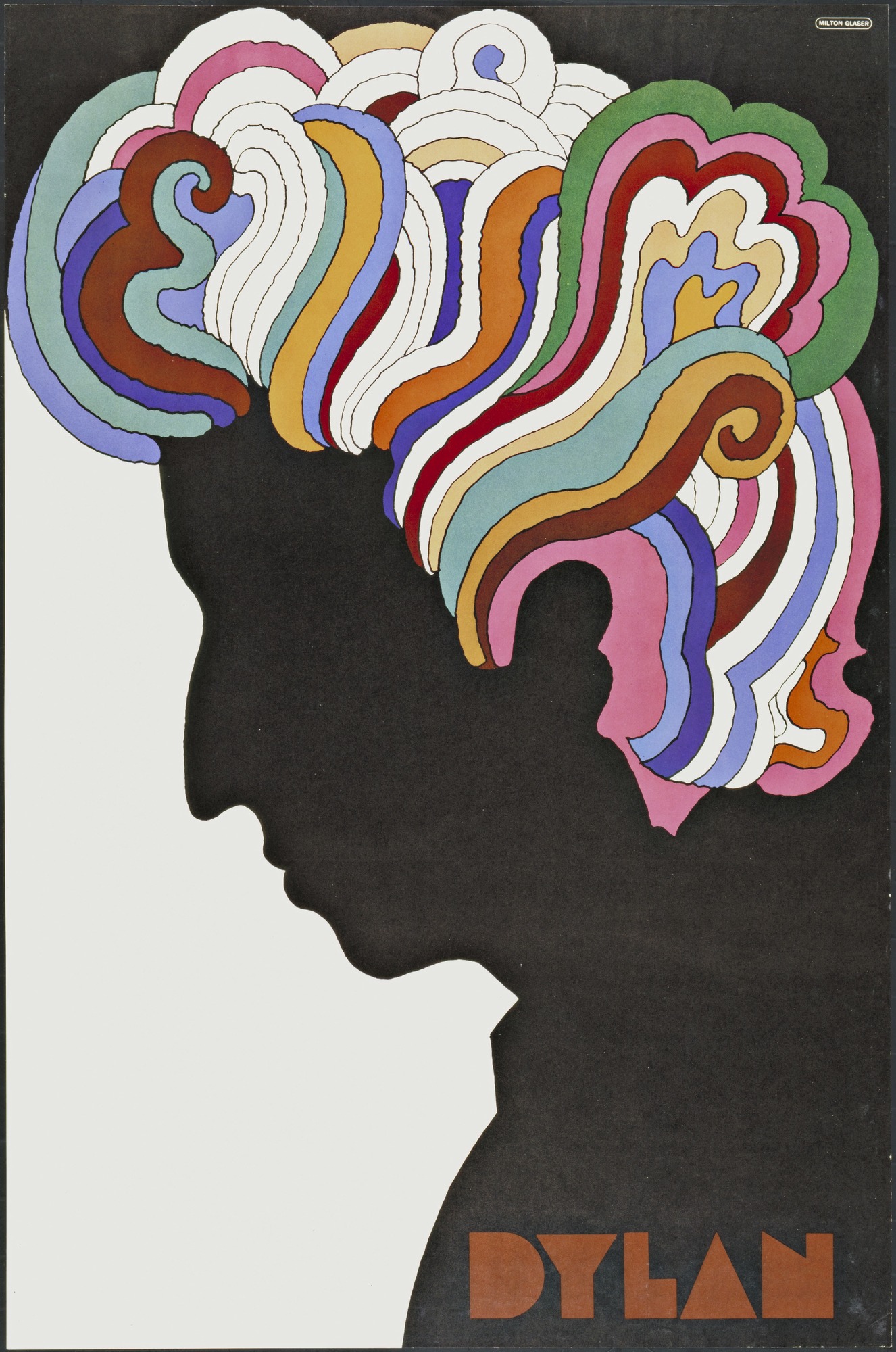





Compare the the images above the some of the best ads of the period.


Although they’re great ideas, good tone of voice, simple art direction, they just feel so damn corporate by comparison.
So 7 Up went full hippy.



Radio.
‘Un’ was rolled out across everything.




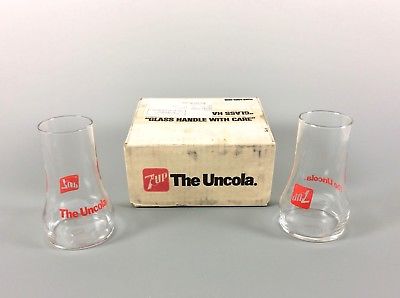



Because the advertising didn’t force sales messages down it’s audiences throats or patronise it’s audience, because it gave them stuff THEY liked, they loved it, so much that they bought it.
As posters, badges, albums, t-shirts, jigsaws, beach towels and in many other forms.



Embroidered patches.

T-Shirts.
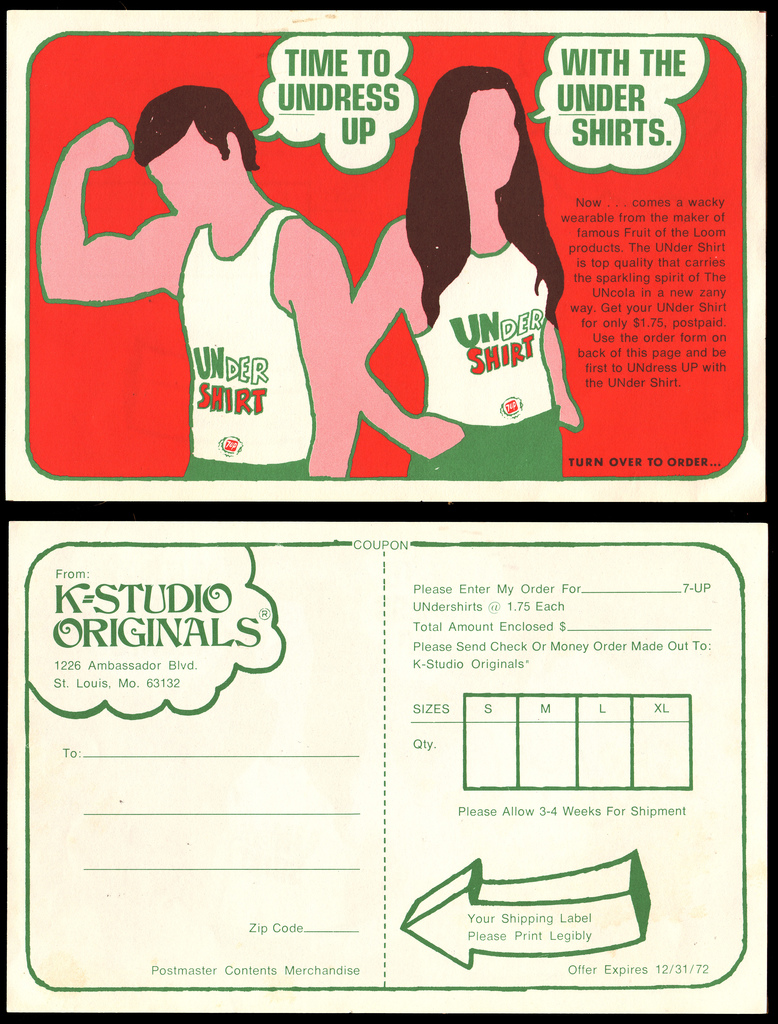
Postcards.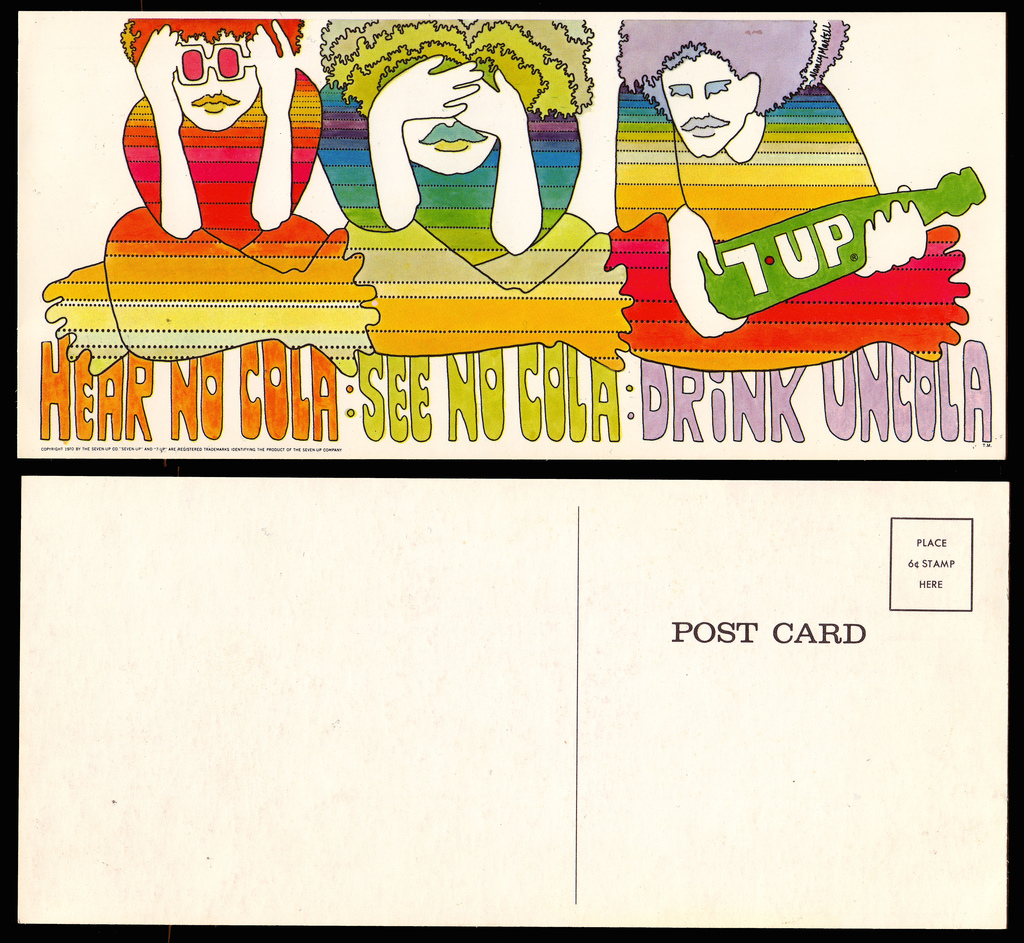


Beach Towels & Jigsaws.
‘Uncola’ saved 7 Up.
It became part of the culture.
Got people to buy their advertising.
Ran for 20 years.
Entered the dictionary*
Maybe there’s something to this fringe idea of making stuff that stands out?
* (“Nickname for 7-Up, a lemon/ lime flavoured soft drink, given to it for marketing purposes. Meant to remind people that it was not, in fact, cola.”)
Podcast: Play in new window | Download
Subscribe: RSS
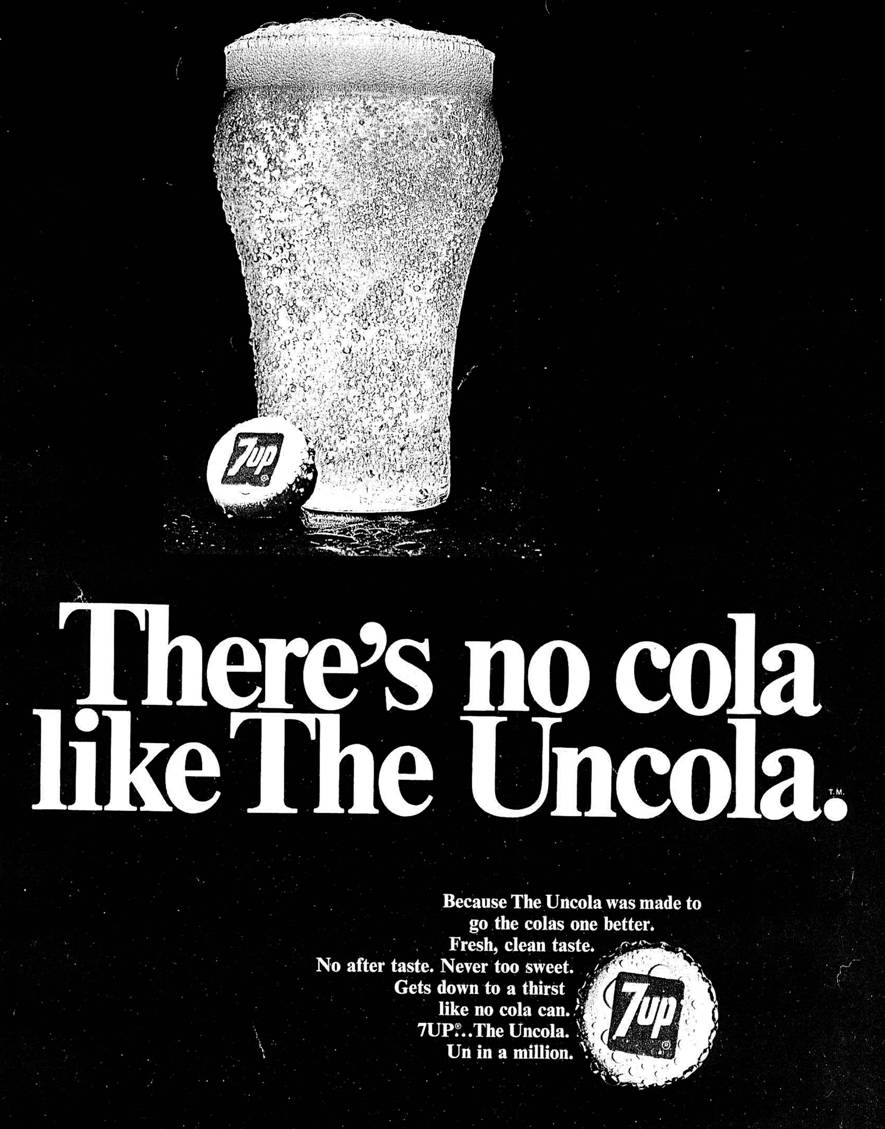





















Great work as always, Dave. Thanks for sharing!
You’re welcome Matt. Dx
Thanks Dave. Inspiring and John Hegarty absolutely on the money as ever.
Fantastic stuff – not seen some of those 60s ads before.
Thoughtful! I’m smiling. Thank you for posting.
The stuff that United nations. A great read. Brilliant D.
Never seen that 7up campaign, shame on me. Brilliant stuff.
Un-believable! what will you uncover next.
Great stuff Dave. And a great credit to you for assembling such a richness of material.
It’s a great example of the controversy – the thing that creates the tension – coming directly from the product, the brand. It stuns me how few brands these days seem to employ people who understand this stuff.
Hey Julian, good to hear from you. Dx
Nice read! Cheers for posting
You’re welcome Jordan. Dx
Great stuff Dave! Cheers and thanks for the effort in putting material like this together and taking us users through journeys worth traveling.
You’re welcome Fernando, good to hear from you. Dx
Dave,
A former student of mine sent me this post on the Uncola. I was at Thompson during that period and knew many of the key creatives on the campaign, including Bill Ross/CD, Charlie Martel/writer (and the person who actually came up with the term Uncola). As part of my tenure-research requirement I wrote a academic paper on the Uncola campaign and presented it to my peers in San Francisco at the AEJMC annual conference for advertising professors. In addition, I did a film about the campaign with interviews with all the living key creatives on the campaign, including Charlie, the Account Manager, Bob Taylor’s wife (Bob conceived of many of the posters you included in your post and also had the idea of pouring 7-UP into a “Coke” glass in the “brown bag” commercial you posed, which as it turned out was NOT trademarked by Coke! And therefore was perfectly legal!) My film is available through Alexander Press and Insight Media, both in NYC as streaming content. I also have a DVD of the film that I can send you if you’d like. Finally, I discuss the Uncola campaign in my textbook which I use in my advertising classes, in the strategy chapter on positioning. My book is available through the publisher, Cognella Academic Publishing, as well as on Amazon and Barnes & Noble. I just finished the second edition, which is also posted on the Cognella site and Amazon, etc. The Uncola campaign is my favorite campaign of all time and many of my own campaigns that won awards are strongly influenced by it. I think it is unique strategically (a beautiful example of positioning), “executionally” (because the campaign broke the cardinal rule that all executions within a campaign need to be very similar; as your post demonstrates in the Uncola campaign all the executions were very different, connected only be the word Uncola or Un). Lastly, it was unique socially. When it was launched in 1967/68, every young person was “un” something. The campaign perfectly stepped into this youth-culture trend and rode it — as you said — to huge success. Sadly, I just saw 7-UP’s latest advertising and it is as perfect an example of horrible advertising as the Uncola was of great advertising.
Bill Barre
Dave, this article is comprehensive and adds a lot of material that I’ve not seen in the past. Well Done!
However, it’s customary to ask permission or at least give credit and provide links to original sources such as the following bloggers were all courteous enough to arrange in advance:
https://www.collectorsweekly.com/articles/collecting-7ups-most-beautiful-hallucinatory-billboards/
https://dangerousminds.net/comments/the_uncola_7up_and_the_most_psychedelic_lsd-friendly_ad_campaign_of_all_tim
http://www.djfood.org/7up-the-uncola-posters/
I openly post my 7Up UnCola images on Flickr and IG for educational purposes only, but ask for credit and links in return for my efforts and expense in putting together the largest collection of UnCola billboards and posters in the world. You can see the rest of the growing collection here:
https://www.flickr.com/photos/30559980@N07/albums
If you like what you see, many of my duplicate original posters and billboards are for sale on eBay on a rotating basis, or contact me via Flickr or IG. New ones are added regularly.
https://www.ebay.com/usr/finishstrong312
https://www.instagram.com/finishstrong312/
PS: Bill Barre – I’d love to share stories. I, too have corresponded or met with many of the surviving players from The UnCola ad campaign.
-Bob Treat
Hey Bob,
Quite right, thanks for bringing this up, I did indeed read lots of articles about ‘Uncola’, yours included, so should’ve given credit.
Hope this is ok? (If not let me know and I could put it at the end of the post.)
Best,
Dave
I first learnt about positioning from Al ries and Jack trout. Uncola is mentioned as a case in their book ‘Positioning’.
This is an outstanding post. Like some of the other commenters here, I had no idea about the 7-Up campaign. This site is a brilliant resource, Dave – thanks for keeping it going. I always learn something new.
You’re welcome Nigel. Dx
Amazing post, dave. Thank you. Now, I wonder why they ever decided to discontinue this campaign. It seems to me that they could’ve evolved it to a number of different places (The Un-usual pin gives a clue). Maybe it’s another case of a new CMO thinking the previous one was an idiot (even if he or she revived the brand) or the fact that a cola eventually did buy 7up out.
Thanks for your this Dave. I love the way you take the reader on a journey. Super insightful
My pleasure Liam, glad you enjoyed it. Dx